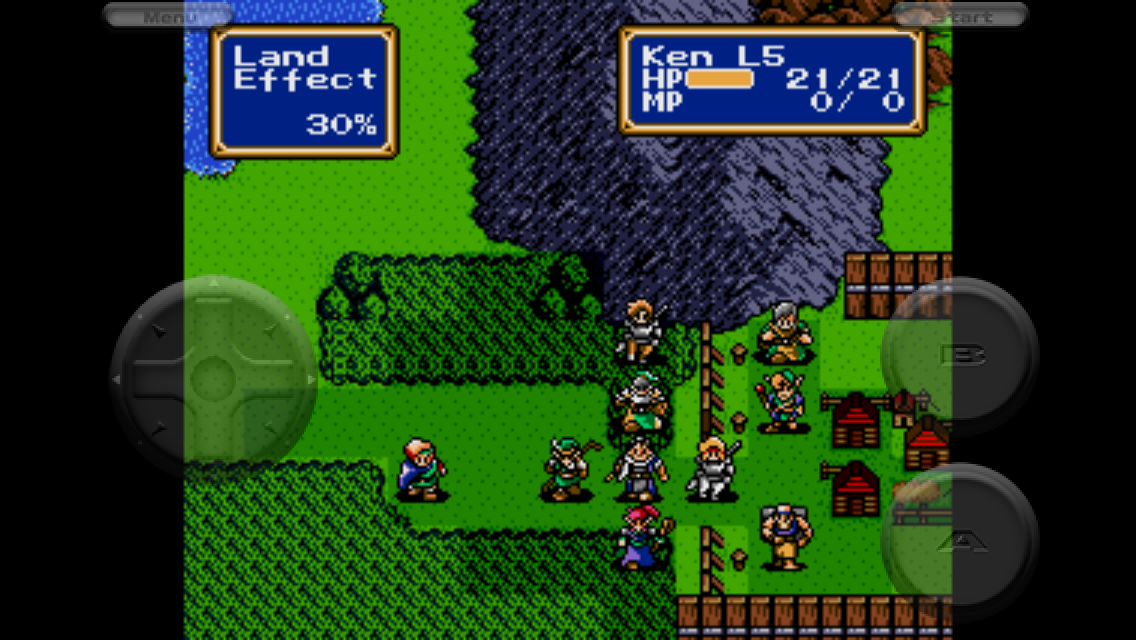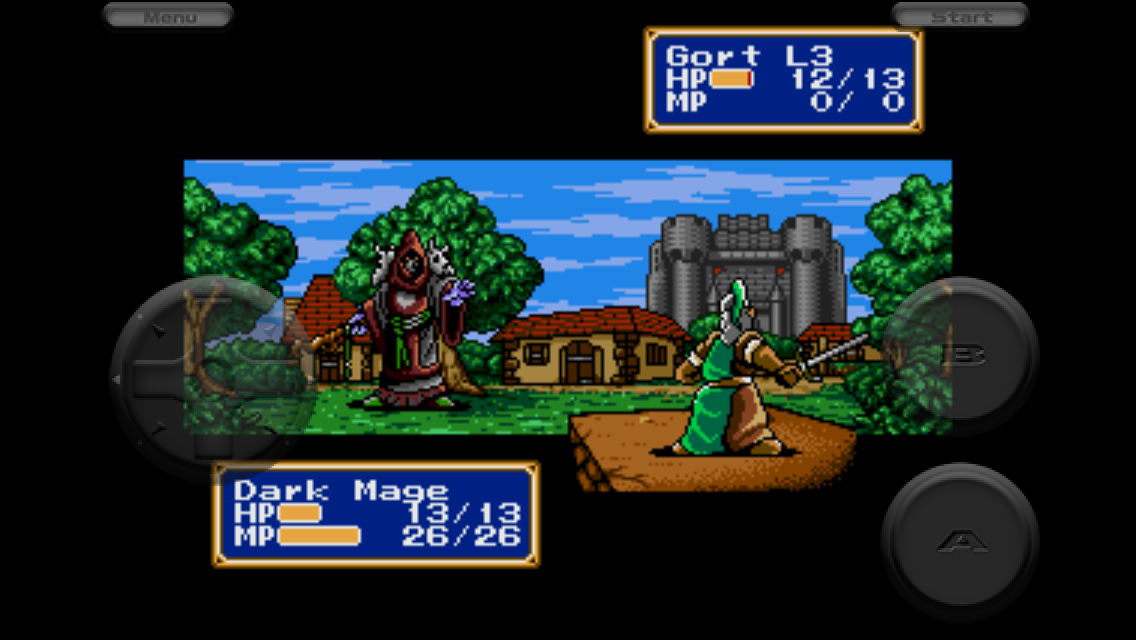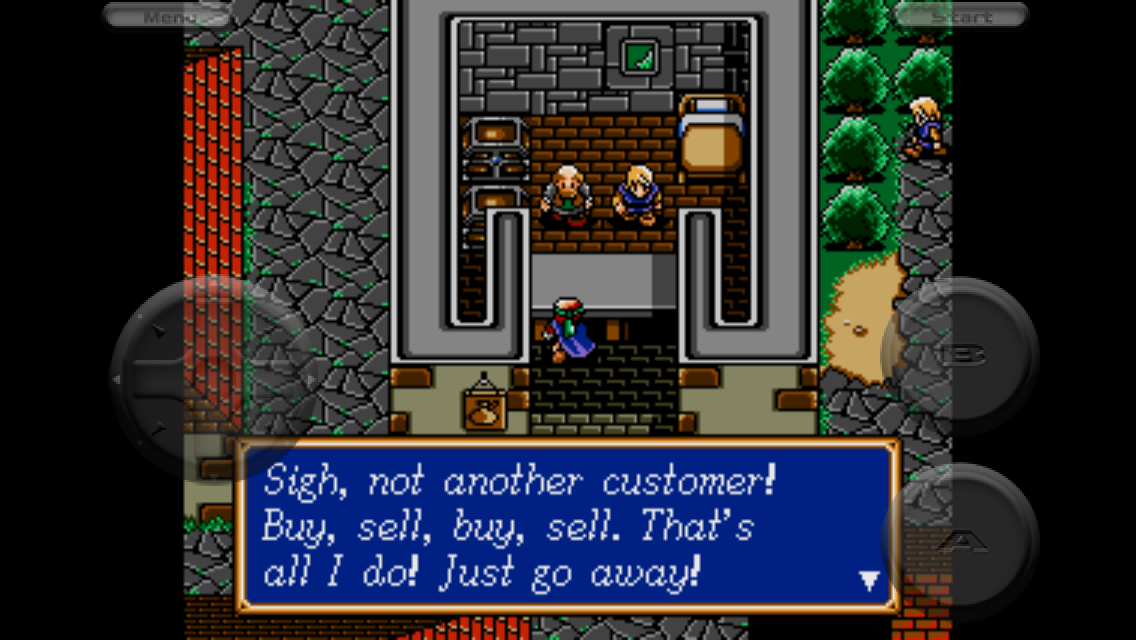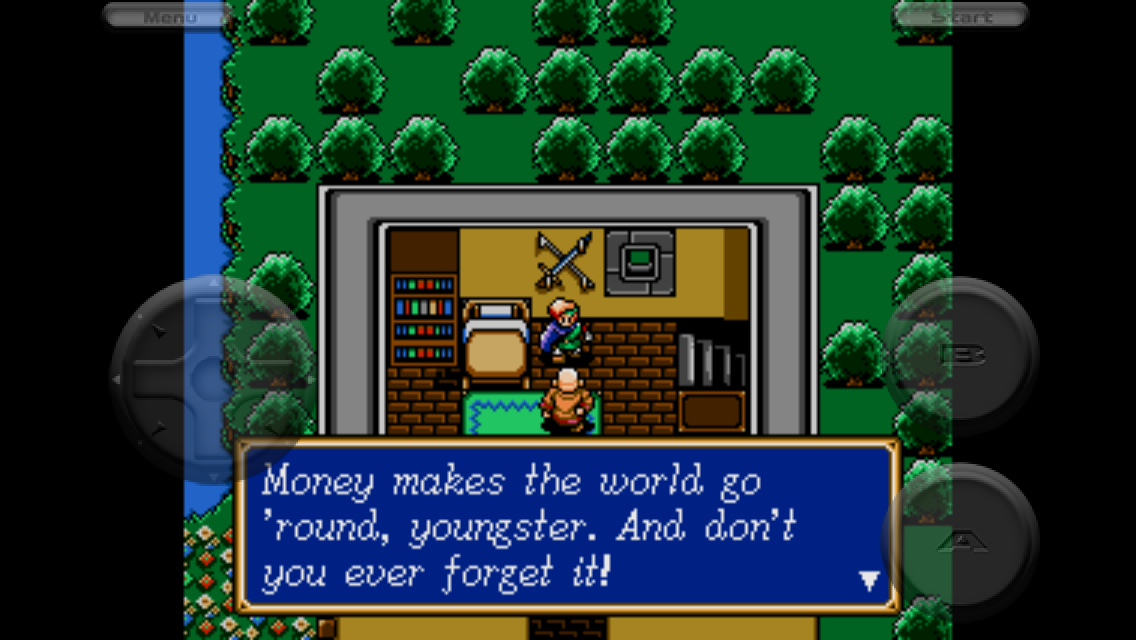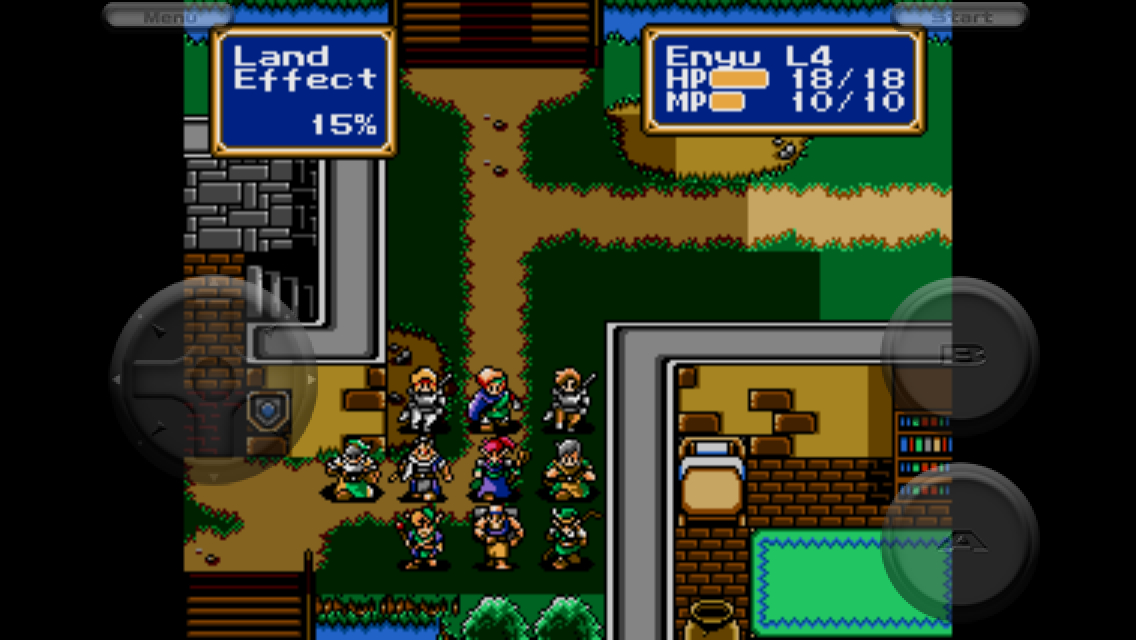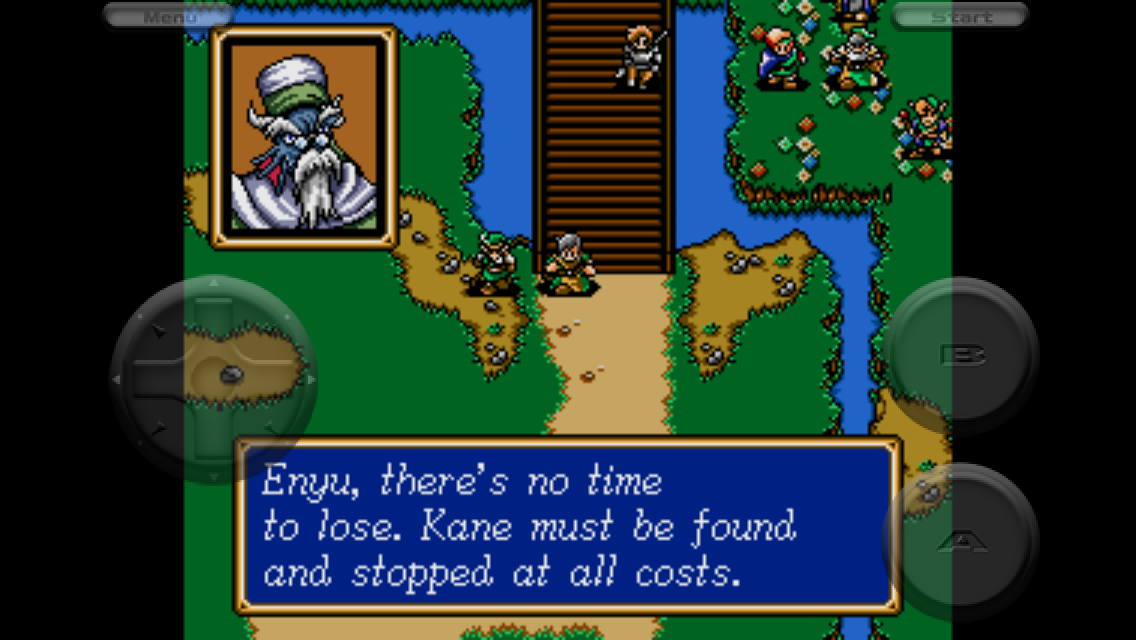![]() Hello, gentle readers, and welcome to the RPG Reload, the weekly feature where we discover that there’s a little Jogurt in all of us. Each week, we take a look at an RPG from the App Store’s past for a little revisiting, a little reflecting, and a bit of a deeper dive than our regular reviews typically allow us. The RPG genre is as vast as the ocean, and I try to schedule games in such a way that we get a balanced plate as we go along, but I need your help with that. Once per month, the selection of the game falls to you, the reader. Simply let me know which game you’d like to see by commenting below, posting in the Official RPG Reload Club thread, or by tweeting me at @RPGReload. The winner will be randomly chosen and featured in April’s reader’s choice article. I don’t know what it will be, but I’m pretty sure we’re fresh out of SEGA games now!
Hello, gentle readers, and welcome to the RPG Reload, the weekly feature where we discover that there’s a little Jogurt in all of us. Each week, we take a look at an RPG from the App Store’s past for a little revisiting, a little reflecting, and a bit of a deeper dive than our regular reviews typically allow us. The RPG genre is as vast as the ocean, and I try to schedule games in such a way that we get a balanced plate as we go along, but I need your help with that. Once per month, the selection of the game falls to you, the reader. Simply let me know which game you’d like to see by commenting below, posting in the Official RPG Reload Club thread, or by tweeting me at @RPGReload. The winner will be randomly chosen and featured in April’s reader’s choice article. I don’t know what it will be, but I’m pretty sure we’re fresh out of SEGA games now!
Sometimes unexpected things happen in the RPG Reload. There was that time you guys chose The Quest ($4.99) when I was planning to do it the next week anyway. Then there was last week, when Phantasy Star 2 (Free), the selection of one fine reader was featured. I swear, I had Shining Force ($0.99) on the schedule for this week from about four months ago. I didn’t plan to do both SEGA Genesis RPGs back to back, but that’s how it worked out. At least they’re pretty different games, right? With this, I’m pretty sure every SEGA and SEGA-related RPG on the App Store has been covered in the RPG Reload. Let’s hope I have more reasons to come back to the house that Suzuki built in the future. For now, let’s talk about Shining Force, a game that has a very different reputation depending on which side of which ocean you live in.
Shining Force has a somewhat complicated lineage. On its surface, it appears to be a naked homage of Nintendo’s Fire Emblem series, sharing a great deal in common with the second installment on the Famicom in particular. Interestingly, that’s apparently not the case at all. In a 2010 interview with UK magazine GamesTM, president of Shining Force developer Camelot Software Planning Hiroyuki Takahashi stated that Nintendo’s popular strategy RPG franchise had nothing to do with Shining Force‘s inception. In fact, he seems quite disdainful of the series, expressing that the game’s tempo was so poor, he didn’t even want to play it. Instead, he points to two other sources. The first was his former employer Enix’s big franchise, Dragon Quest, and the other, a very obscure Japanese PC game titled Silver Ghost. The inspiration from the former is fairly apparent outside of battles, but Takahashi wanted something a bit more fun when it came to combat. Silver Ghost is an action RPG, oddly enough, and seems like a strange source for anything in Shining Force save perhaps the large number of characters you took into battles with you.
Whatever the case may be, Shining Force has an awful lot in common with Fire Emblem, which had released two years prior in 1990. You play through a series of turn-based battles involving large groups of characters. Each battle plays out on its own special map, requiring you to close distances and make use of natural cover to press an advantage over your foes. As you play through the story, you’ll recruit new members to your team, some optional and quite easy to permanently miss out on. Individual characters earn experience by attacking enemies or healing allies in battle, and new gear can be found and equipped to improve their parameters. Just as in Fire Emblem, your characters can change classes once they reach a certain level, making them more powerful. The story even has massive similarities to the first Fire Emblem, setting you against an evil force dedicated to resurrecting a Dark Dragon from a sealed gate.
It deviates from that game greatly between battles, however. Somewhat similar to Fire Emblem Gaiden, which released in March 1992 alongside this game in Japan, the game doesn’t merely shuffle you from battle to battle using story segments. Instead, the gameplay changes to more typical JRPG style, allowing you to wander around towns, talk to people, buy equipment, and so on. It’s also worth noting that Shining Force is a far easier game than Fire Emblem. Losing a character in battle results only in them sitting out the rest of the fight. Even if Max, the main character, is killed, you’re simply booted out of the fight with half your gold taken away. You even get to keep any experience points you earned in the failed attempt. You’ll have to pay some gold to revive any fallen party members, but it’s not much of a burden. This style is almost exactly the same as Dragon Quest ($2.99)’s, and while I personally prefer the sharp-fanged difficulty of Nintendo’s strategy franchise, even Fire Emblem doesn’t deny the appeal of a slightly relaxed challenge these days. There are other interesting differences that I’ll go into later, but for now, that should give you the general picture of what Shining Force is like.
Although Shining Force is the most popular brand of the Shining line of games, it’s actually the second installment in the series. The first was a 1991 dungeon crawler for the Genesis called Shining In The Darkness. The game was developed by Camelot, then known as Sonic! Software Planning, with assistance from Climax Entertainment, who would go on to develop games like Landstalker and the Runabout series of racing games. The latter is not to be confused with UK developer Climax Group, who created the ATV Off-Road Fury series of games on PlayStation. Climax, the Japanese one, would assist Sonic! Software Planning with one more game in the Shining series before going on to their own work, leaving the franchise in the hands of Takahashi and his team until they and SEGA parted over various disagreements following the poorly-handled release of Shining Force 3 on the SEGA Saturn.
Shining In The Darkness was developed on a shoestring budget, but managed to be a pretty modest hit worldwide in spite of that. Naturally, one might expect a typical follow-up with a bigger budget behind it, but neither of those things were meant to be. Instead, Sonic! Software Planning were allegedly given a relatively low budget to develop their next game, Shining Force. While the game took place in the same continuity as Shining In The Darkness, that game wouldn’t see a true sequel until Shining The Holy Ark for the SEGA Saturn. One of the reasons why is because Shining Force was a relatively huge hit for SEGA. Its Japanese release sold moderately above expectations, but its US release in 1993 smashed them. Thanks to Nintendo’s odd decision to leave Fire Emblem in Japan for its first decade of existence, Americans had never played anything quite like Shining Force, and it fared well critically, commercially, and in player feedback. The Shining brand was hot, and a sequel was inevitable.
SEGA being SEGA, they once again apparently lowballed Sonic! Software Planning on the budget for Shining Force‘s follow-up. Nevertheless, the game proved to be terrific, and firmly established the brand in the hearts and minds of players all over the world. The Shining brand still exists today, long after Sonic! Software Planning left the series to hook up with Sony and Nintendo. The Shining Force style of gameplay, on the other hand, seems long buried. Still, no one can say it didn’t have a good run. In addition to the three main chapters of the series on the Genesis and Saturn, there were two Shining Force side-stories for the portable Game Gear and a SEGA-CD remake that collected both for console players. That’s more chances than SEGA gave to Dragon Force or Valkyria Chronicles.
The third game in the main series is a particularly salty point for fans outside of Japan. The game had an odd premise, taking an episodic approach that was very rare at the time. There were three parts to the game, each offering a different perspective on the main plot. Only by completing all three scenarios could you see the true ending to the epic. English gamers would never get that chance, since SEGA only ever released Scenario 1 in English. The other parts fell victim to the house-cleaning brought on by the appointment of Bernie Stolar as head of SEGA of America. He correctly believed that the Saturn was dead in the water in America, and put a bullet in the poor machine to clear the decks for the upcoming Dreamcast. It makes sense from a business standpoint, I suppose, but I’m still bitter about it, in case you couldn’t tell. The funny thing is, I don’t think I’m the only one, because that would be the last time the original creators of the Shining series would work on it. These days, the Shining brand mostly services a steady niche in Japan, and has all but disappeared from the rest of the world. Let’s take a step back from the discussion about SEGA’s tragic bungling, though, or we might be here all day.
Shining Force is noteworthy in the series in that it was the only game to see a remake. In 2004, SEGA released Shining Force: Resurrection Of The Dark Dragon for Game Boy Advance, which added a bunch of new story elements, a few new characters, and a new difficulty system that had the game get more challenging with each subsequent playthrough. The original game has also seen re-releases on its own and in collections on Dreamcast, Nintendo Wii, Windows PCs, Xbox 360, PlayStation 3, and of course, iOS. The iOS release came out in July of 2010 and uses SEGA’s questionable iOS Genesis emulator, resulting in some sound and music issues that probably won’t bother most people all that much. Fortunately, the turn-based nature of the game makes it a good fit for virtual controls, so while the game could certainly benefit from a touch-specific port, it’s actually not too frustrating to play.
The game starts off a lot like a typical JRPG. You’ve been knocked out by your trainer, you meet your best friend, and are told to go meet with the king. You can wander around town and talk to people, buy some cheap items at the shop, or look around for treasure chests. A friendly priest will save your game if you want. Once you talk to the king, you’re given a special mission, and even at this point, it feels like something out of Dragon Quest. You’re told to form a small army, and several members are assigned to you right away. It’s only once you arrive at your destination that things take a turn. The battle takes place in a ruined structure, and follows what we now know are typical Japanese strategy RPG rules. Each unit on the field takes turns moving, and depending on what kind of weapon they’re using, can attack enemy units from particular ranges. In this game, turn order is partially dependent on each character’s agility, but also has a random element to it. It makes it pretty hard to guess who will go next, and it would be pretty annoying if this game weren’t as gentle as a summer breeze.
I’m actually more annoyed by how slowly battles play out. It’s funny that Takahashi has voiced grievances with Fire Emblem‘s tempo, because Shining Force is a much more lethargic game. Part of that comes from tech limitations, since the computer can only think and move so quickly. Most of it is just from a bad design decision, perhaps brought on by not playing Fire Emblem. In that series, defending units will strike back at the attacker. That doesn’t happen in Shining Force, and it makes battles take a lot longer to resolve. Oh well, we didn’t know any better at the time. For us English players, it’s only irritating in hindsight, and compared to other games of the era, it’s not such a big problem. I think it’s one of several ways the game falls short compared to its obvious competition, though.
Although this would improve in the sequels, the story in Shining Force is pretty basic. This was a deliberate choice, since the target audience at the time was relatively young. It’s a simple good vs. evil story that makes extensive use of many of the genre’s popular tropes. The main character, Max, gets little in the way of character development, an aspect that is amplified in the English version where certain background details were omitted. The characters you meet and recruit are nearly as thin. They might have a single defining trait, if they’re lucky, but for the most part, their character definition starts and stops at their portrait. Those portraits do help quite a bit, though, giving the game a lot of its charm and personality. The game also has a fairly good translation, with plenty of odd jokes around if you care to look for them.
The biggest joke isn’t found in the text, but in the game itself. Shining Force has a few secret characters, but the most famous member of the bunch is probably Jogurt. He’s a… well, he’s a hamster in a helmet, more or less. If you try to use him in battle, you’ll quickly see that he only deals a single point of damage when he attacks. You’re probably thinking he’s one of those characters who becomes awesome if you invest in him, similar to Dragon Quest‘s fool/gadabout class, but you would be mistaken. Jogurt never becomes any stronger. If you manage to use him enough for him to gain a level, you’ll get a Jogurt Ring for your efforts. Equipping this on another character makes them look like Jogurt. It’s pretty funny, and serves as a bit of a nose-tweak for people who like to grind up every single character in their games. That said, Jogurt does have one excellent use. He has a lot of movement points, so he can make a really good decoy in certain situations. Whether you want to waste a team slot on that kind of specific utility is up to you.
There are thirty battles in the game in total, and with all of the town exploration stuff in between, it makes for a fairly hefty 20+ hour adventure. It’s not a very difficult game, as I’ve mentioned, but the enemies put up enough of a fight that it’s not a bore by any means. It’s also worth mentioning that on the whole, it’s a much more playable game than Phantasy Star 2, the topic of last week’s article. With that game, you basically had to go in with the mindset that it came from another era of the genre in order to brace yourself for its quirks. Here, the game is just as easy to play and enjoyable as most examples of its genre on mobiles. I’m not sure whether that speaks to how well Shining Force was designed at the time, or how little the genre has progressed since. Either way, if you want to try one of the Genesis RPGs and want the least possible friction in doing so, Shining Force is the choice for you.
As for this version of the game in particular, like most of SEGA’s other Genesis releases on iOS, it’s merely adequate. It was initially released in mid-2010, so support for things like MFi controllers, Retina displays, larger iPhone screen sizes, iCloud, and even the iPad itself was obviously not included in the launch release. The game has had one update since, when it broke after the release of iOS 6, and there’s no indication it will ever receive another unless it breaks again. Even then, one can’t be too sure knowing the state of SEGA these days. Like Phantasy Star 2, you can’t save your state at any time, but it does support multitasking. It’s not as big of an issue in Shining Force, however, since you don’t stand to lose any progress from failing a battle anyway. The emulator SEGA uses isn’t all that good, so the game doesn’t run as smoothly as it ought to, and the sound has issues. To be perfectly honest, I find most of the music in the first Shining Force to be irritating as is, so I typically play it muted. Still, the game plays well enough, and even on an iPad, it doesn’t look bad scaled up. I’d say almost any other version of the game is preferable to the iOS port, but if iOS is your only option, you’ll be fine.
Like Phantasy Star 2, this title appears to be the only game from the series we’re going to get from SEGA on iOS. It’s a bit more understandable here, I suppose, since the series runs across a few platforms, but I sure would like to see Shining Force 2 at some point. The first game is proof of concept, and a very good one, to be sure, but the second game really knocked it out of the park. Shining Force 2 has also been released on fewer platforms than the first game, so any chance to make it more widely available would be quite welcome in my books. I won’t even dare to dream about re-releases of Shining Force CD and Shining Force 3. I wouldn’t say no to Shining In The Darkness, even. In the meantime, if you haven’t played any of the Shining Force games, this one is here and only costs a dollar. It’s aged pretty well, and although there are a couple of better Japanese-style strategy RPGs on the App Store, this game probably represents the best bang for your buck. Just don’t fall in love, because only heartbreak awaits you down that path.
That’s just my two cents on Shining Force, though. What do you think? A mishandled classic series? A photocopy of Fire Emblem that only had success because its opponent didn’t show up to play in the rest of the world? Let’s get a good old-fashioned SEGA vs. Nintendo brawl going in the comments this time. You can also leave your thoughts in the Official RPG Reload Club thread, or tell me how terrible Donkey Kong Country is via Twitter at @RPGReload. Oh, and don’t forget to check out the second episode of our monthly RPG Reload Podcast, where Eric Ford and I talked about Avernum: Escape From The Pit ($9.99). It’s a fun one! As for me, I’ll be back next week with another vintage RPG. Thanks for reading!
Next Week’s Reload Hint: We’re off to see the wizard, the wonderful wizard named Throzdin.
